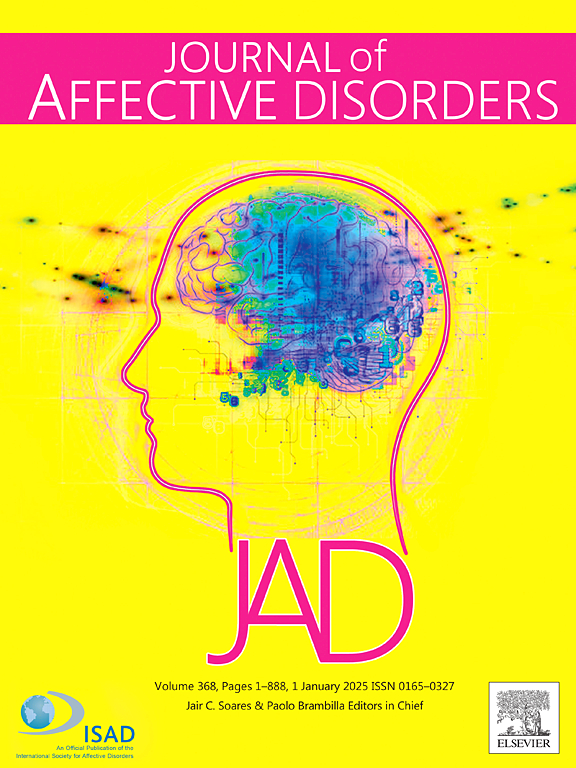Combined ketamine and psychotherapy provide no additional benefit beyond ketamine alone in treating depression or PTSD: Evidence from a help-seeking sample
IF 4.9
2区 医学
Q1 CLINICAL NEUROLOGY
引用次数: 0
Abstract
Depression and PTSD are prevalent psychiatric conditions that often co-occur and significantly impact quality of life. Ketamine has emerged as a promising rapid-acting treatment for both conditions, while traditional treatments like psychotherapy typically require weeks to show effects. This study investigated whether combining ketamine with psychotherapy produces greater symptom improvement compared to ketamine alone. We analyzed overlapping samples of N = 202, N = 470, and N = 624 help-seeking individuals (all samples ∼60 % female, mean age ∼ 42 years) who received either ketamine alone (KET) or ketamine plus psychotherapy (KET+PSY) across 4–14 treatment sessions within a 30- or 180-day period. Depression symptoms were measured using the PHQ-9, and PTSD symptoms were assessed using the PCL-5. Trajectories of symptom change were analyzed using generalized additive mixed-effects models, controlling for baseline symptoms, demographics, and treatment intervals. Both treatment groups showed substantial improvement in depression and PTSD symptoms, with similar patterns of rapid initial decline followed by stabilization. Contrary to our hypothesis, we found no significant differences in symptom trajectories between the KET and KET+PSY groups. Exploratory analyses revealed non-significant but notable patterns where younger females showed better outcomes with combined treatment, while older males showed better outcomes with ketamine alone. These findings suggest that ketamine's therapeutic effects may be robust enough that additional psychotherapy during the acute treatment phase does not significantly enhance 30-day (and possibly 180-day) outcomes. However, longer-term benefits of combined treatment and potential demographic-specific treatment responses warrant further investigation. These results have important implications for treatment planning and resource allocation in clinical settings.
求助全文
约1分钟内获得全文
求助全文
来源期刊

Journal of affective disorders
医学-精神病学
CiteScore
10.90
自引率
6.10%
发文量
1319
审稿时长
9.3 weeks
期刊介绍:
The Journal of Affective Disorders publishes papers concerned with affective disorders in the widest sense: depression, mania, mood spectrum, emotions and personality, anxiety and stress. It is interdisciplinary and aims to bring together different approaches for a diverse readership. Top quality papers will be accepted dealing with any aspect of affective disorders, including neuroimaging, cognitive neurosciences, genetics, molecular biology, experimental and clinical neurosciences, pharmacology, neuroimmunoendocrinology, intervention and treatment trials.
 求助内容:
求助内容: 应助结果提醒方式:
应助结果提醒方式:


